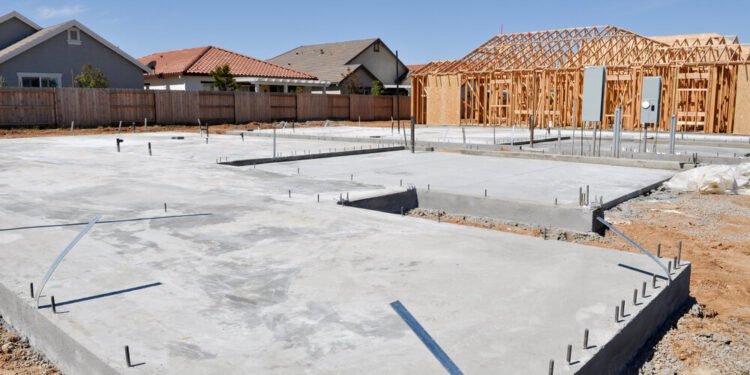Last Updated on February 1, 2025 by admin
A slab foundation is one of the most common options for building a house. It is easy to make and provides a solid base for a home.
Slabs are also an affordable option for homeowners, reducing their utility bills. However, they do have some drawbacks that you should be aware of.
Structural integrity
One of the most effective methods for restoring structural integrity is the installation of a foundation pier system. This system is designed to support and stabilize the foundation, preventing further sinking or shifting of the structure. By opting for such a solution, homeowners can ensure the long-term safety and durability of their property, protecting it from future damage.
When signs of foundation issues are detected, it’s crucial to seek professional help for foundation damage repair. Properly repairing any damage ensures that the structural integrity of your home is restored, preventing further deterioration. A solid foundation is the backbone of any structure, and taking timely action can save you from extensive repairs in the future.
Maintaining the structural integrity of your home requires regular attention to its foundation. Scheduling foundation inspections is essential to identify potential issues early, such as cracks or uneven settling, which could compromise the stability of your house. By addressing these problems promptly, you can prevent more significant and costly repairs down the line, ensuring that your home remains safe and sound.
The foundation of your house is a crucial factor in its structural integrity. It is especially true if your home is built on a slab foundation.
A slab foundation is a flat concrete foundation that sits directly on the ground and is typically 4-6 inches thick in the center. It is anchored via footings (underground concrete columns) that support the concrete slab.
Generally, slab foundation Killeen TX is more energy efficient than other types. However, repairing the foundation can be more expensive if it experiences cracks or settlement problems.
Plumbing leaks can also damage a slab foundation. Since the plumbing pipes are encased in the concrete, even a tiny leak can cause significant damage to the structure.
The foundation underpinning process is a key method used by professionals to stabilize and strengthen the foundation, ensuring it can support the structure above. This technique not only halts further damage but also reinforces the foundation, giving it the strength to endure the stresses it may encounter over time. Without proper underpinning, the foundation may continue to weaken, compromising the entire structure’s stability.
Regular inspections, maintaining proper drainage around the foundation, and addressing plumbing issues promptly can go a long way in avoiding extensive damage. However, when problems do arise, applying the right foundation repair method is crucial to preserving the integrity of the building and preventing costly long-term damage.
Durability
When built correctly, slab foundations can last for decades. Additionally, they are pest, mold, and mildew resistant.
Slab foundations are budget-friendly and require little to no maintenance. They are also easy to expand with the help of professional construction teams.
However, slab foundations can fail if the soil shifts or the area experiences an earthquake. It can cause cracks in the concrete that may significantly damage the structure.
Soil settlement damages can be repaired by boring holes in the foundation and installing piers. Sometimes, homeowners may also need to pump a liquid mixture below the slab.
Plumbing leaks under the concrete slab foundation can create significant problems. These leaks can damage the foundation, especially if left unfixed for a long time.
Slab-on-grade foundations can also suffer from frost heave caused by soils that freeze at 6 feet or more depths. It can cause the foundation to lift and move at the edges.
When these issues arise, seeking expert house leveling services can help restore stability and prevent further structural damage. Professionals use specialized techniques like pier installation and slab jacking to correct uneven foundations and reinforce the home’s structural integrity. Identifying foundation problems early and addressing them promptly can save homeowners from costly repairs and ensure long-term stability.
Crawl space
Your home’s foundation is one of the most critical factors in ensuring its safety and enduring value. Its type determines where it will be located, how well it will protect the property from flooding and other environmental concerns, and whether it is structurally sound enough to withstand a significant earthquake.
Slab foundations are typically built on sand or gravel to encourage drainage and reduce the risk of water settling underneath your home. They also have deep concrete on the edges to prevent settling during freeze and thaw cycles.
Crawl spaces are also famous for some home builders due to their ability to elevate the structure and provide more space for plumbing, electrical wiring, and HVAC equipment.
They are ideal for sloped lots because less excavation is required (digging only for walls, not the entire slab). In addition, it means they are cheaper and faster to build than basements, especially in areas with high rainfall or dry climates.
Energy efficiency
Slab foundations are a relatively affordable way to build a home. They are also considered a greener building option because they reduce the amount of CO2 released into the environment.
A slab foundation typically includes a concrete footer, and the exterior walls are built on top of it. Then, the floor is poured and “floats” on the footing.
Some slab foundations include a layer of insulation beneath the slab to help with energy efficiency. It helps maintain comfortable temperatures within the structure and saves homeowners money on utility bills.
Another advantage of a slab foundation is that it is easier to repair than crawl space foundations, as the repair crew can access the pipes underneath. However, slabs can crack if exposed to freezing temperatures or other factors, making them more susceptible to structural problems. Read more interesting articles on Today world info










